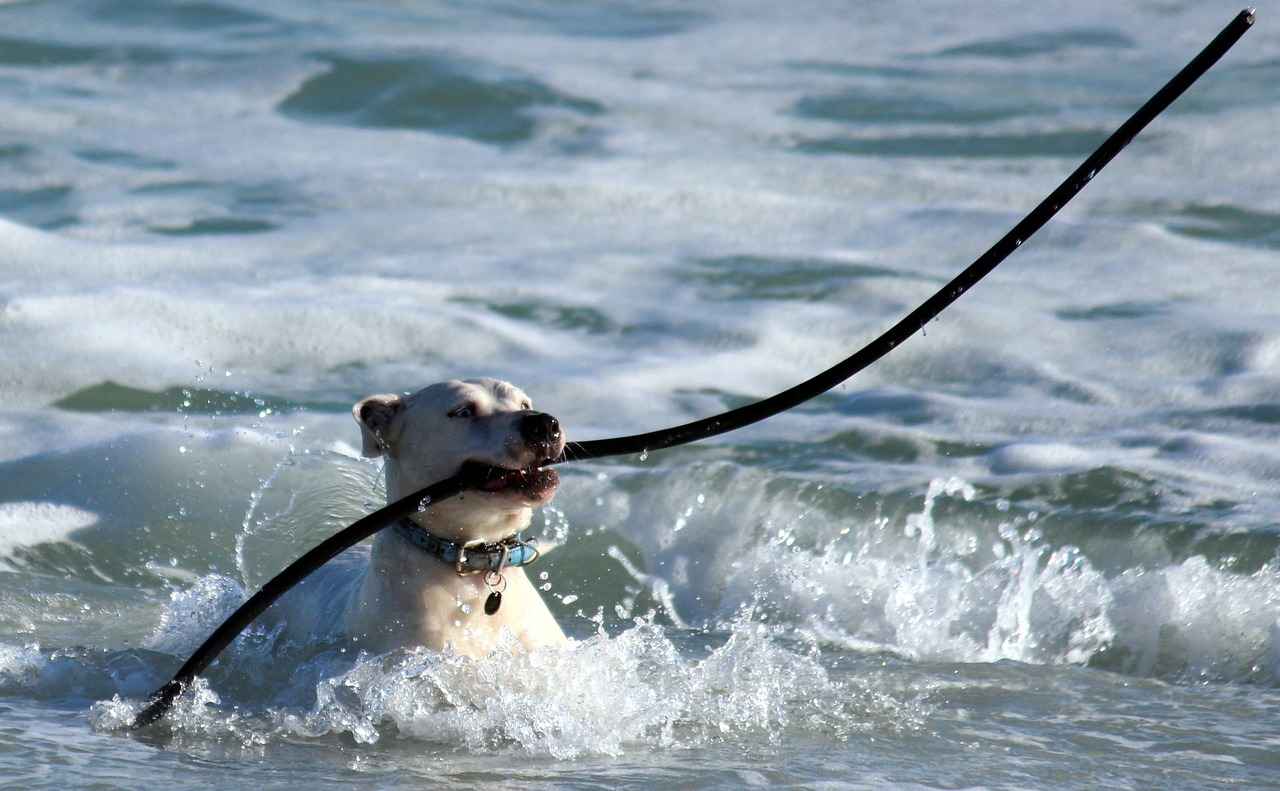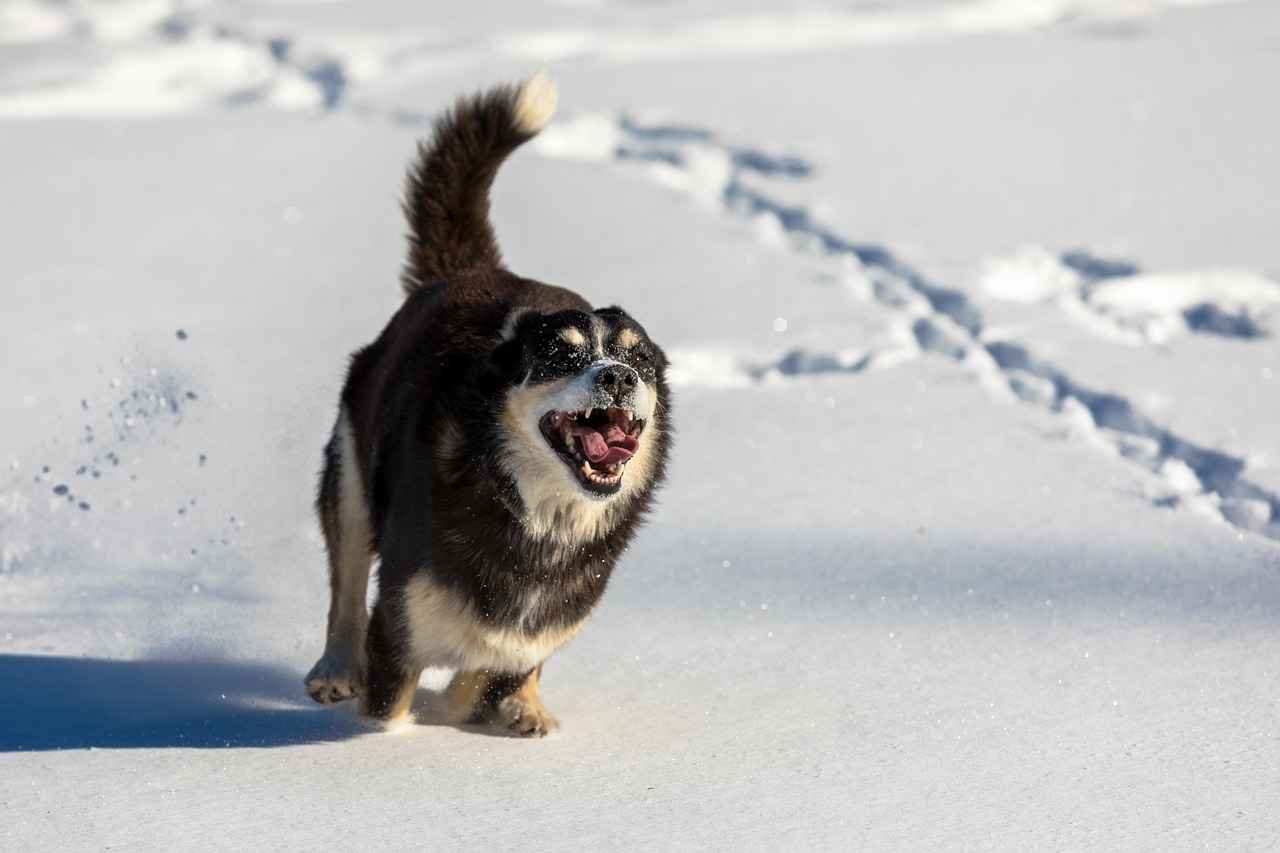This article delves into the complex relationship between dog breeds and their biting behavior. By analyzing various factors that contribute to aggression and bite incidents, we aim to provide an informed perspective for dog owners and enthusiasts alike.
The Psychology of Dog Behavior
Understanding dog behavior is essential in assessing why some breeds may show more aggression than others. Factors such as genetics, environment, and socialization play pivotal roles in shaping a dog’s temperament and biting tendencies.
Factors Influencing Dog Biting Incidents
- Genetics and Breed-Specific Traits: Some breeds possess inherited traits that can predispose them to aggressive behavior. For example, breeds like Rottweilers and Pit Bulls may have a higher likelihood of biting due to their lineage.
- Environmental Factors: The environment in which a dog is raised can significantly impact its behavior. Dogs that are not properly socialized may exhibit more aggressive tendencies.
The Role of Training and Socialization
Effective training and early socialization are crucial in preventing aggressive behavior. Positive reinforcement techniques can encourage good behavior, reducing the likelihood of biting incidents.
Statistics on Dog Bites by Breed
Data indicates that certain breeds are more frequently involved in bite incidents. For instance, statistics show that German Shepherds and Chihuahuas are often reported in bite cases, highlighting the importance of understanding breed characteristics.
Myths and Misconceptions About Dog Breeds
There are numerous myths surrounding dog breeds and their behaviors. The belief that certain breeds are inherently aggressive is misleading. Media portrayal can also skew public perception, leading to misconceptions about specific breeds.
Conclusion: Responsible Dog Ownership
Responsible ownership is vital in preventing dog bites. Understanding breed traits, investing in proper training, and ensuring adequate socialization are essential steps for all dog owners.

The Psychology of Dog Behavior
Understanding dog behavior is essential for any dog owner or enthusiast, as it provides insights into why certain breeds may display heightened aggression compared to others. This section explores the psychological factors that significantly influence a dog’s temperament and biting tendencies.
Dogs, much like humans, possess unique personalities shaped by a combination of genetic predispositions and environmental influences. Certain breeds, due to their historical roles and characteristics, may be more prone to aggressive behaviors. For instance, breeds that were originally developed for guarding or hunting may exhibit more protective instincts, which can sometimes manifest as aggression.
Moreover, a dog’s early experiences play a crucial role in shaping its behavior. Socialization during the formative months of a dog’s life can determine how it reacts to unfamiliar situations or people. Dogs that lack proper social exposure may become fearful or anxious, leading to potential biting incidents.
- Genetic Factors: Research indicates that specific breeds have inherited traits that can predispose them to aggression. For example, breeds like Rottweilers and Pit Bulls have often been associated with higher bite rates.
- Environmental Influences: Factors such as the dog’s living conditions, family dynamics, and exposure to various stimuli can significantly affect its behavior.
- Training and Socialization: A well-trained dog that has been properly socialized is less likely to display aggressive tendencies. Training methods that focus on positive reinforcement can help mitigate these risks.
Understanding the psychology behind dog behavior is not just about recognizing potential aggression; it is about fostering a healthy relationship between dogs and their owners. By comprehending the underlying factors that contribute to a dog’s temperament, owners can take proactive measures to ensure a safe and harmonious environment for both their pets and the community.

Factors Influencing Dog Biting Incidents
Understanding the dynamics behind dog biting incidents is essential for dog owners and enthusiasts alike. Various factors contribute to a dog’s likelihood of exhibiting aggressive behavior, and these factors often intertwine in complex ways. This section explores the key elements that shape a dog’s behavior and potential for aggression.
- Genetics: A dog’s genetic background plays a significant role in its behavior. Certain breeds are predisposed to specific traits that may influence their aggression levels. For example, breeds like Rottweilers and Doberman Pinschers have been historically bred for protection, which can lead to heightened defensive behaviors if not properly managed.
- Environment: The environment in which a dog is raised is crucial. Dogs that grow up in chaotic or abusive settings may develop fear-based aggression. Conversely, a stable and nurturing environment can foster a well-adjusted pet. Socialization during the critical early months of a dog’s life can help mitigate aggressive tendencies.
- Training: Proper training is vital in shaping a dog’s behavior. Dogs that undergo consistent training and positive reinforcement are less likely to display aggressive tendencies. Training helps establish boundaries and teaches dogs how to interact appropriately with humans and other animals.
Moreover, the interaction of these factors is essential. A genetically predisposed dog raised in a stressful environment without proper training is more likely to exhibit aggressive behavior than one that has received comprehensive socialization and training. Understanding these elements can help dog owners take proactive measures to prevent biting incidents.
In conclusion, recognizing the interplay between genetics, environment, and training is crucial for responsible dog ownership. By addressing these factors, owners can significantly reduce the risk of dog bites and promote a safer community for both dogs and humans.
Genetics and Breed-Specific Traits
play a significant role in understanding the likelihood of aggressive behavior in dogs. While it is crucial to recognize that not all dogs of a certain breed will exhibit aggression, certain inherited traits can predispose specific breeds to a higher probability of biting. This section will delve into the genetic components that contribute to these behaviors.
Many dog breeds were developed for specific purposes, such as herding, guarding, or hunting. These roles have shaped their instincts and behaviors over generations. For example, breeds like Rottweilers and Doberman Pinschers were historically bred for protection, which can lead to a more pronounced territorial instinct. This inherent drive can sometimes manifest as aggression if not properly managed through training and socialization.
Furthermore, research indicates that certain breeds have a genetic predisposition to exhibit more dominant or aggressive behaviors. For instance, breeds such as American Pit Bull Terriers and Chow Chows may show higher tendencies toward aggression due to their lineage. However, it is essential to note that genetics is just one piece of the puzzle. Environment, upbringing, and individual experiences also play critical roles in shaping a dog’s behavior.
In addition to breed-specific traits, the lineage of a dog can further influence its temperament. Dogs from a line known for aggression may inherit these tendencies, while those from a lineage focused on companionship may be more docile. Understanding these factors can help potential dog owners make informed decisions when choosing a breed that fits their lifestyle.
Ultimately, responsible ownership, including proper training and socialization, is vital in mitigating any genetic predispositions toward aggression. By recognizing the potential influence of genetics and breed-specific traits, dog owners can take proactive steps to ensure a well-adjusted and safe pet.
Understanding Breed Characteristics
Each dog breed possesses distinct characteristics that can significantly influence its behavior, including the potential for aggression and biting incidents. While it’s essential to recognize that individual dogs may vary widely within a breed, certain traits are commonly associated with specific breeds. This understanding helps dog owners make informed decisions about training, socialization, and overall care.
| Breed | Common Traits | Behavioral Tendencies |
|---|---|---|
| Rottweiler | Protective, Confident | May exhibit territorial aggression if not properly socialized. |
| German Shepherd | Intelligent, Loyal | Can be aggressive towards strangers if not trained adequately. |
| Pit Bull | Strong, Energetic | Often misunderstood; aggression often stems from poor training or abuse. |
| Chihuahua | Alert, Feisty | Small size can lead to overcompensation through aggressive behavior. |
Understanding these breed-specific traits is vital for dog owners. For example, Rottweilers and German Shepherds, known for their protective nature, require consistent training and socialization from an early age to prevent aggressive tendencies. On the other hand, breeds like Pit Bulls often face stigma due to their strength and past media portrayals, despite many being gentle and loving companions when raised in a positive environment.
Moreover, small breeds such as Chihuahuas may display aggression as a defense mechanism due to their size. This behavior, often referred to as “small dog syndrome,” can lead to biting incidents if not addressed through proper training and socialization.
Ultimately, understanding the unique characteristics of each breed is essential for fostering a safe and harmonious relationship between dogs and their owners. By recognizing these traits, owners can take proactive steps to mitigate risks associated with biting and ensure their pets are well-adjusted members of society.
Lineage and Ancestry Effects
A dog’s lineage plays a significant role in shaping its temperament and behavior, including its propensity to bite. Understanding the historical context of a breed can provide insights into its behavioral traits. For instance, many breeds were developed for specific purposes, such as herding, guarding, or hunting, which can influence their natural instincts and reactions.
Breeds that were historically used for guarding, such as Rottweilers and Doberman Pinschers, often have a heightened sense of territoriality and may exhibit aggressive behaviors if they perceive a threat. On the other hand, breeds that were developed for companionship, like Golden Retrievers or Cavalier King Charles Spaniels, typically display more gentle and friendly temperaments. This divergence in purpose highlights how a breed’s history can contribute to its likelihood of biting.
| Breed | Original Purpose | Temperament Traits |
|---|---|---|
| Rottweiler | Guarding | Protective, Loyal, Territorial |
| Golden Retriever | Companionship | Friendly, Intelligent, Gentle |
| German Shepherd | Herding/Working | Confident, Courageous, Loyal |
| Cavalier King Charles Spaniel | Companionship | Affectionate, Sociable, Gentle |
Moreover, genetic predispositions can also manifest in behavioral tendencies. For example, certain breeds may have inherited traits that make them more reactive or sensitive to stimuli, which can lead to biting in stressful situations. This is why it is crucial for potential dog owners to research a breed’s lineage and understand how it may influence behavior.
In conclusion, a dog’s lineage and ancestry significantly shape its temperament and behavior. By understanding the historical context and original purpose of different breeds, owners can better anticipate and manage their dog’s behavior, ultimately reducing the risk of biting incidents.
Environmental Factors
The environment in which a dog is raised significantly impacts its behavior. Understanding the role of environmental factors is crucial for dog owners and enthusiasts. This section explores how living conditions and socialization affect biting tendencies in dogs.
Living Conditions and Their Impact
A dog’s living environment plays a vital role in shaping its behavior. Dogs raised in stressful or chaotic environments may develop anxiety and aggression, leading to increased biting tendencies. Factors such as noise, overcrowding, and lack of structure can contribute to a dog’s discomfort, making it more likely to react defensively.
Socialization: The Key to a Well-Adjusted Dog
Proper socialization is essential for a dog’s emotional development. Dogs that are exposed to various people, animals, and environments at a young age tend to be more confident and less fearful. This exposure helps them learn appropriate behaviors and reduces the likelihood of aggressive responses. Conversely, dogs that lack socialization may become fearful and reactive, increasing their chances of biting.
| Socialization Activities | Benefits |
|---|---|
| Visits to parks | Improves interaction with other dogs and people |
| Training classes | Enhances obedience and reduces anxiety |
| Exposure to different environments | Builds confidence and adaptability |
Impact of Owner Behavior
The behavior of dog owners also significantly affects their pets. Dogs often mirror their owner’s emotions and reactions. An owner who is calm and confident can help their dog feel secure, while an anxious owner may inadvertently instill fear in their pet. This fear can lead to defensive behaviors, including biting.
In conclusion, the environment in which a dog is raised, including its living conditions and socialization experiences, plays a crucial role in shaping its behavior. By providing a stable environment and ensuring proper socialization, dog owners can help mitigate biting tendencies and promote positive behaviors.

The Role of Training and Socialization
Training and socialization play a crucial role in shaping a dog’s behavior and preventing aggressive tendencies. Understanding the importance of these elements can significantly reduce the risk of biting incidents. This section will explore effective training methods and socialization strategies that every dog owner should consider.
Effective training techniques not only help in teaching obedience but also in establishing a strong bond between the dog and its owner. Positive reinforcement is one of the most effective training methods. This approach involves rewarding desired behaviors with treats, praise, or playtime, which encourages dogs to repeat those behaviors. For instance, rewarding a dog for sitting calmly during interactions can promote a sense of security and reduce anxiety, which are often triggers for aggression.
Moreover, early socialization is vital for a dog’s development. Exposing puppies to various environments, people, and other animals during their formative months can significantly decrease the likelihood of future aggression. A well-socialized dog learns to navigate different situations without fear or hostility, which is essential for their overall temperament. This exposure should be gradual and positive, ensuring that the puppy feels safe and confident in diverse scenarios.
| Training Method | Description | Benefits |
|---|---|---|
| Positive Reinforcement | Rewarding good behavior with treats or praise. | Encourages repeat of desired behaviors; builds trust. |
| Clicker Training | Using a clicker to mark desired behaviors followed by a reward. | Provides clear communication; enhances learning. |
| Socialization Classes | Structured classes with other dogs and people. | Promotes confidence; reduces fear-based aggression. |
In conclusion, training and socialization are not just beneficial; they are essential components in preventing aggressive behavior in dogs. By implementing positive reinforcement techniques and ensuring early and consistent socialization, dog owners can foster well-adjusted pets who are less likely to exhibit biting tendencies. A proactive approach in these areas can lead to a harmonious relationship between dogs and their families, making the community safer for everyone.
Positive Reinforcement Techniques
When it comes to dog training, positive reinforcement is a powerful tool that can significantly enhance a dog’s behavior. This technique involves rewarding desirable actions, which encourages dogs to repeat those behaviors. By focusing on what dogs do right, rather than punishing undesirable actions, owners can create a more trusting and cooperative relationship with their pets.
One of the most compelling reasons to use positive reinforcement is its effectiveness in reducing the likelihood of biting incidents. Dogs that are trained with positive methods are generally more confident and well-adjusted. They learn to associate good behavior with rewards, which can include treats, praise, or playtime. This creates a positive feedback loop that reinforces calm and friendly behavior.
Moreover, positive reinforcement helps dogs develop better social skills. When dogs are rewarded for interacting peacefully with other dogs and people, they are less likely to exhibit fear-based aggression, which is a common trigger for biting. For instance, if a dog is rewarded for sitting calmly during a visit to the vet or for greeting a new person without jumping or barking, it learns that such behavior leads to positive outcomes.
In addition to reducing biting incidents, positive reinforcement can also help in addressing specific behavioral issues. For example, if a dog tends to growl or snap when approached while eating, rewarding it for allowing people near its food can gradually change this behavior. This approach not only helps in minimizing aggression but also fosters a sense of security in the dog.
Overall, employing is a humane and effective way to encourage good behavior in dogs. By focusing on rewarding positive actions, dog owners can cultivate a well-behaved pet that is less likely to engage in biting or aggressive behavior, leading to a more harmonious relationship.
Early Socialization Importance
Early socialization is crucial for a dog’s overall development and well-being. Exposing dogs to various environments, people, and other animals at a young age can significantly shape their behavior and temperament.
When puppies are socialized properly, they learn to navigate the world around them with confidence and curiosity. This process not only helps in preventing aggression but also fosters a friendly disposition towards strangers and other pets. Here are some key aspects of early socialization:
- Exposure to Different Environments: Puppies should be introduced to various settings, such as parks, busy streets, and homes with different sounds and smells. This helps them adapt and reduces anxiety in new situations.
- Interaction with People: Regularly meeting diverse groups of people, including children and adults, allows puppies to become comfortable and less fearful of unfamiliar faces.
- Meeting Other Animals: Socializing with other dogs and animals is vital. Positive interactions during playtime can teach dogs appropriate behavior and communication skills.
- Desensitization to Stimuli: Early exposure to various stimuli, such as loud noises, moving objects, and different surfaces, can help puppies become more resilient and less reactive to sudden changes.
Moreover, socialization should be a fun and positive experience. Utilizing positive reinforcement techniques, such as treats and praise, can encourage good behavior and make learning enjoyable for the puppy.
In conclusion, the importance of early socialization cannot be overstated. It lays the foundation for a well-adjusted adult dog, significantly decreasing the likelihood of behavioral issues, including aggression. By investing time and effort into socializing puppies, dog owners can help ensure their pets grow into friendly, confident, and well-behaved companions.

Statistics on Dog Bites by Breed
Understanding the statistics on dog bites is crucial for dog owners, potential adopters, and the general public. Analyzing these statistics reveals significant trends related to specific breeds, helping to inform responsible pet ownership and awareness.
According to various studies, certain breeds are reported to have higher incidences of biting. For instance, breeds such as the American Pit Bull Terrier, Rottweiler, and German Shepherd frequently appear in bite reports. However, it is essential to note that these statistics can be influenced by numerous factors, including the dog’s environment, upbringing, and socialization.
| Breed | Incidence Rate of Bites | Notes |
|---|---|---|
| American Pit Bull Terrier | 30% | Often reported; aggressive behavior can stem from poor training. |
| Rottweiler | 20% | Strong protective instincts; require proper socialization. |
| German Shepherd | 15% | Intelligent and loyal; can be defensive if not trained. |
| Labrador Retriever | 10% | Generally friendly; bites often occur due to provocation. |
It’s vital to understand that not all bites are equal. The context of a bite incident plays a significant role in understanding the behavior of the dog involved. For example, many bites occur when a dog feels threatened or is protecting its territory. Additionally, the dog’s state of mind, such as fear or anxiety, can lead to aggressive responses.
In conclusion, while certain breeds may statistically appear more frequently in bite incidents, it is crucial to consider the broader context of each situation. Responsible dog ownership, including proper training and socialization, plays a significant role in reducing the likelihood of biting incidents across all breeds. By focusing on the individual dog’s behavior and environment, we can create a safer community for both dogs and humans.
Common Breeds Involved in Bite Incidents
When it comes to dog bites, certain breeds are reported more frequently than others. Understanding which breeds are commonly involved in bite incidents can help potential dog owners make informed decisions and promote safer interactions between dogs and humans. This section provides an overview of these breeds and their associated biting statistics.
| Dog Breed | Percentage of Reported Bites | Common Reasons for Biting |
|---|---|---|
| American Pit Bull Terrier | 25% | Fear, territoriality, lack of socialization |
| Rottweiler | 15% | Protective instincts, inadequate training |
| German Shepherd | 10% | Guarding behavior, fear, or anxiety |
| Chihuahua | 8% | Fear-based aggression, overprotectiveness |
| Doberman Pinscher | 7% | Protective nature, lack of socialization |
While these breeds are statistically more likely to be involved in bite incidents, it is essential to recognize that individual behavior can vary significantly based on numerous factors, including training, socialization, and the environment in which the dog is raised. Responsible ownership and proper training can mitigate many risks associated with these breeds.
Moreover, it is crucial to consider that the majority of dog breeds, regardless of their reputation, can exhibit aggressive behavior if not properly cared for. Understanding the specific needs and characteristics of each breed is vital for ensuring a safe and harmonious relationship between dogs and their human companions.
Understanding the Context of Bites
is essential for grasping the complexities of canine behavior. While many may focus solely on the breed when discussing dog bites, it is critical to consider the context in which a bite occurs. Not all bites are created equal; the circumstances surrounding a bite can significantly influence its nature and implications.
When analyzing dog bites, we must take into account several factors, including provocation, the dog’s state of mind, and the environment. For instance, a dog may bite when it feels threatened or cornered, reacting out of fear rather than aggression. Understanding these triggers can help prevent such incidents.
- Provocation: Dogs may bite when they perceive a threat, whether real or imagined. This can include sudden movements, loud noises, or unfamiliar individuals approaching too closely.
- State of Mind: A dog’s emotional state plays a crucial role. A stressed or anxious dog is more likely to react defensively than one that is calm and comfortable.
- Environmental Factors: The surroundings can also impact a dog’s behavior. Dogs raised in chaotic or abusive environments may be more prone to aggressive reactions.
Moreover, the context of the interaction is vital. For example, a dog may bite during play when overly excited or when it feels its territory is being invaded. Understanding these nuances can aid in better training and socialization practices, ultimately leading to safer interactions between dogs and humans.
In conclusion, recognizing that not all bites are equal and that context matters can foster a more informed perspective among dog owners. By considering the myriad factors that contribute to biting incidents, we can work towards reducing the risks and enhancing the safety of both dogs and their human companions.

Myths and Misconceptions About Dog Breeds
When it comes to understanding dog behavior, particularly biting tendencies, there are numerous myths that can lead to significant misunderstandings. These misconceptions often stem from stereotypes, media portrayals, and anecdotal experiences that do not accurately reflect the true nature of various dog breeds.
- Myth 1: Certain breeds are inherently aggressive.
- Myth 2: Size determines a dog’s likelihood to bite.
- Myth 3: Mixed-breed dogs are less predictable than purebreds.
- Myth 4: Training can’t change a dog’s aggressive tendencies.
The first myth suggests that specific breeds, such as Pit Bulls or Rottweilers, are born aggressive. In reality, a dog’s behavior is influenced by a combination of genetics, environment, and training. While some breeds may exhibit traits that can lead to aggressive behavior if not managed properly, it is essential to recognize that aggression is not an inherent trait of any breed.
Another common misconception is that larger dogs are more likely to bite than smaller ones. However, studies indicate that small dogs are often involved in bite incidents just as frequently, if not more so, than their larger counterparts. This highlights the importance of understanding that size does not correlate with temperament.
Additionally, the belief that mixed-breed dogs are less predictable than purebreds is misleading. In fact, mixed-breeds may benefit from a wider genetic diversity, which can lead to better overall health and temperament.
Finally, the idea that training cannot alter a dog’s aggressive tendencies is a harmful myth. With proper training and socialization, many dogs can learn to manage their behaviors effectively. Positive reinforcement techniques have proven to be particularly effective in shaping a dog’s behavior.
In conclusion, dispelling these myths is crucial for responsible dog ownership. Understanding the complexities of canine behavior helps foster better relationships between dogs and their owners, ultimately leading to safer interactions within our communities.
Debunking the
Do Certain Dog Breeds Bite More Than Others?
This article explores the relationship between dog breeds and biting behavior, analyzing factors that contribute to aggression and bite incidents to provide an informed perspective for dog owners and enthusiasts.
The Psychology of Dog Behavior
Understanding dog behavior is crucial in assessing why certain breeds may exhibit more aggression than others. This section delves into the psychological aspects that influence a dog’s temperament and biting tendencies.
Factors Influencing Dog Biting Incidents
- Genetics and Breed-Specific Traits: Certain breeds have inherited traits that may predispose them to aggressive behavior. Genetics play a significant role in a dog’s likelihood to bite.
- Environmental Factors: The environment in which a dog is raised significantly impacts its behavior. Living conditions and socialization affect biting tendencies.
- The Role of Training and Socialization: Training and socialization are critical in preventing aggressive behavior in dogs. Effective training methods can help mitigate biting risks.
Statistics on Dog Bites by Breed
Analyzing statistics on dog bites reveals trends related to specific breeds. Certain breeds are more frequently reported in bite incidents, and context matters when understanding these bites.
Myths and Misconceptions About Dog Breeds
- Debunking the Aggressive Breed Myth: The belief that certain breeds are inherently aggressive is misleading. Breed alone does not determine a dog’s behavior.
- Media Influence on Perceptions of Breeds: Media portrayal can skew public perception of dog breeds, contributing to the stigma surrounding certain breeds and their biting behavior.
Conclusion: Responsible Dog Ownership
Responsible ownership is essential in preventing dog bites. Understanding breed traits, training, and socialization is crucial for all dog owners.
Aggressive Breed
Do Certain Dog Breeds Bite More Than Others?
This article explores the relationship between dog breeds and biting behavior, analyzing factors that contribute to aggression and bite incidents to provide an informed perspective for dog owners and enthusiasts.
The Psychology of Dog Behavior
Understanding dog behavior is crucial in assessing why certain breeds may exhibit more aggression than others. This section delves into the psychological aspects that influence a dog’s temperament and biting tendencies.
Factors Influencing Dog Biting Incidents
- Genetics and Breed-Specific Traits: Certain breeds have inherited traits that may predispose them to aggressive behavior.
- Understanding Breed Characteristics: Each dog breed has unique characteristics that can affect its behavior.
- Lineage and Ancestry Effects: A dog’s lineage can influence its temperament, contributing to its propensity to bite.
Environmental Factors
The environment in which a dog is raised significantly impacts its behavior. Living conditions and socialization affect biting tendencies.
The Role of Training and Socialization
Training and socialization are critical in preventing aggressive behavior in dogs. Effective training methods can help mitigate biting risks.
- Positive Reinforcement Techniques: Using positive reinforcement can encourage good behavior in dogs.
- Early Socialization Importance: Socializing a dog at a young age is vital for its development.
Statistics on Dog Bites by Breed
Analyzing statistics on dog bites reveals trends related to specific breeds. Certain breeds are more frequently reported in bite incidents, and context matters when examining these occurrences.
Myths and Misconceptions About Dog Breeds
- Debunking the Aggressive Breed Myth: The belief that certain breeds are inherently aggressive is misleading.
- Media Influence on Perceptions of Breeds: Media portrayal can skew public perception of dog breeds.
Conclusion: Responsible Dog Ownership
Responsible ownership is essential in preventing dog bites. Understanding breed traits, training, and socialization is crucial for all dog owners.
Myth
The belief that certain breeds are inherently aggressive is misleading. This notion oversimplifies the complex nature of dog behavior and fails to account for a multitude of influencing factors. While it is true that some breeds may have characteristics that can lead to aggressive behavior, it is essential to recognize that breed alone does not determine a dog’s behavior.
One of the primary reasons this belief is misleading is that aggression is a multifaceted behavior. It can stem from various factors including genetics, environment, and training. For instance, a dog’s upbringing plays a crucial role in shaping its temperament. A dog raised in a loving, social environment is likely to be more well-adjusted than one that has faced neglect or abuse, regardless of its breed.
Furthermore, socialization is vital in preventing aggressive tendencies. Dogs that are exposed to different people, animals, and environments during their formative months tend to develop better social skills and are less likely to exhibit aggressive behavior. This highlights the importance of responsible ownership and the need for early socialization.
Additionally, the media often perpetuates the myth of aggressive breeds by sensationalizing incidents involving certain dogs. This can lead to a skewed perception where breeds like Pit Bulls or Rottweilers are viewed as inherently dangerous, despite many individuals of these breeds being gentle and loving companions.
In conclusion, it is crucial for dog owners and enthusiasts to understand that labeling breeds as aggressive overlooks the significant impact of environmental factors and training. By focusing on responsible ownership, early socialization, and positive reinforcement, we can foster well-behaved dogs regardless of their breed. This perspective not only promotes better relationships between dogs and humans but also helps dismantle harmful stereotypes that can lead to breed discrimination.
Media Influence on Perceptions of Breeds
Media portrayal plays a significant role in shaping public perception of various dog breeds. Through sensationalized stories and dramatic headlines, the media often amplifies the stigma surrounding certain breeds, particularly those labeled as “aggressive.” This section delves into how these portrayals can skew public understanding and lead to widespread misconceptions about dog behavior.
When a dog bite incident occurs, media outlets frequently highlight the breed involved, focusing on its physical attributes and historical reputation rather than the specific circumstances of the event. For example, breeds like Pit Bulls and Rottweilers often receive disproportionate attention, leading to a perception that they are inherently dangerous. This narrative can overshadow the reality that any dog, regardless of breed, can exhibit aggressive behavior under certain conditions.
Moreover, sensationalized reporting tends to neglect the critical factors that contribute to a dog’s behavior, such as environment, training, and socialization. By failing to present a balanced view, the media perpetuates stereotypes and fosters fear among potential dog owners and the general public.
Additionally, the portrayal of dog breeds in movies and television often emphasizes violence and aggression, further entrenching negative stereotypes. These fictional representations can lead to a misunderstanding of the breed’s true nature, influencing how people perceive and interact with these dogs in real life.
It is essential to recognize that responsible ownership and proper training play crucial roles in a dog’s behavior. By focusing on education and awareness, we can combat the misconceptions fueled by media portrayals and promote a more informed perspective on dog breeds. Understanding the complexities of dog behavior allows for better relationships between dogs and humans, ultimately leading to safer communities.
Conclusion: Responsible Dog Ownership
Responsible ownership plays a crucial role in preventing dog bites, and it is imperative for every dog owner to recognize their responsibilities. Understanding the complexities of dog behavior, including breed traits, training, and socialization, is essential for fostering a safe environment for both dogs and humans.
Firstly, breed traits significantly influence a dog’s behavior. Different breeds have unique characteristics that may predispose them to certain behaviors, including aggression. For instance, breeds that were historically bred for guarding or herding may exhibit protective instincts, which could lead to biting if they feel threatened. Therefore, it is vital for owners to educate themselves about their dog’s breed and its specific traits.
Secondly, training is a fundamental aspect of responsible ownership. Implementing consistent and positive training methods can help mitigate aggressive tendencies. Training should begin at an early age, focusing on basic commands and socialization skills. This early intervention can significantly reduce the risk of biting incidents as the dog learns appropriate behaviors in various situations.
Moreover, socialization is equally important. Exposing dogs to different environments, people, and other animals helps them develop a well-rounded temperament. Socialized dogs are generally more adaptable and less likely to react aggressively to unfamiliar stimuli. Owners should prioritize socialization during the critical developmental stages of their dog’s life.
In conclusion, responsible dog ownership encompasses a thorough understanding of breed characteristics, effective training, and comprehensive socialization. By committing to these practices, dog owners can significantly reduce the likelihood of dog bites, ensuring a safer community for everyone. Remember, a well-trained and socialized dog is a happy dog, and responsible ownership leads to harmonious relationships between dogs and humans.
Frequently Asked Questions
- Do certain dog breeds really bite more than others?
Yes, some breeds are statistically more likely to be involved in biting incidents. However, it’s essential to consider factors like environment, training, and socialization, which play significant roles in a dog’s behavior.
- What factors contribute to a dog’s biting behavior?
Several factors influence biting behavior, including genetics, environment, and the training a dog receives. A dog’s upbringing and socialization are crucial in shaping its temperament and response to various situations.
- How can training reduce the likelihood of dog bites?
Effective training, especially using positive reinforcement techniques, can help instill good behavior in dogs. Early socialization is also vital, exposing dogs to different people and situations to minimize fear and aggression.
- Are all dog bites aggressive?
Not all bites are aggressive; context matters significantly. Some bites may be defensive or due to fear, while others might occur during play. Understanding the situation can provide clarity on the dog’s intent.
- What myths exist about aggressive dog breeds?
One common myth is that certain breeds are inherently aggressive. This belief is misleading, as aggression is influenced by multiple factors, including training and environment, rather than breed alone.












